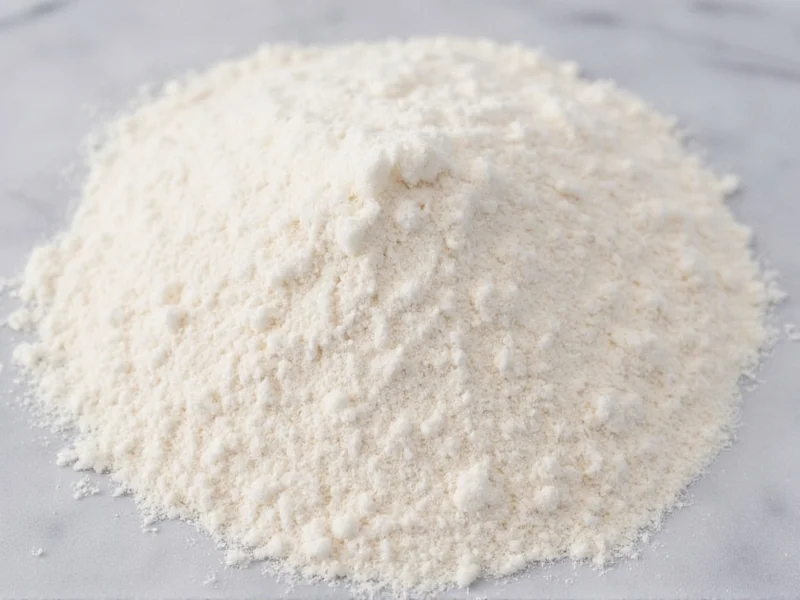Understanding powdered citric acid specifications is essential for manufacturers, food producers, and cleaning product formulators who rely on consistent quality. This versatile compound serves multiple purposes across industries, but its effectiveness depends heavily on meeting precise target parameters during production.
What Powdered Citric Acid Targets Actually Mean
When industry professionals discuss "powdered citric acid target," they're referring to the specific quality benchmarks that define acceptable product characteristics. These targets aren't arbitrary—they directly impact performance in various applications. The primary targets include:
- Purity levels - Food-grade citric acid must meet minimum 99.5% purity standards
- Particle size - Typically measured in mesh size (30-100 mesh is common)
- Moisture content - Usually maintained below 1.5% to prevent caking
- pH level - Approximately 2.2 in solution for standard applications
- Heavy metal limits - Strict thresholds for lead, arsenic, and mercury
Industry Standards for Powdered Citric Acid Specifications
Different applications require different target specifications. Understanding these variations helps professionals select the right product for their needs:
| Application | Target Purity | Target Particle Size | Moisture Target | Special Requirements |
|---|---|---|---|---|
| Food & Beverage | 99.5% minimum | 40-80 mesh | <1.5% | FDA compliant, no heavy metals |
| Cleaning Products | 99.0% minimum | 30-60 mesh | <2.0% | Higher tolerance for impurities |
| Pharmaceutical | 99.9% minimum | 60-100 mesh | <1.0% | USP/NF compliance, strict documentation |
| Home Preservation | 99.5% minimum | 40-100 mesh | <1.5% | Food-grade certification required |
How Target Specifications Impact Real-World Applications
The importance of meeting powdered citric acid target specifications becomes clear when examining practical applications. In food manufacturing, improper particle size affects dissolution rates, potentially creating uneven flavor distribution in beverages. For home canning enthusiasts searching for powdered citric acid target for canning tomatoes, the correct particle size ensures proper acidity adjustment without leaving visible residue.
Manufacturers determine powdered citric acid quality targets through rigorous testing protocols. Titration methods measure actual citric acid content, while sieve analysis verifies particle size distribution. Moisture analysis typically uses loss-on-drying techniques to ensure the product meets target specifications for storage stability.
Troubleshooting Common Powdered Citric Acid Specification Issues
When powdered citric acid fails to meet target specifications, several issues may arise:
- Caking problems - Indicates moisture content exceeds target levels, often due to improper storage
- Slow dissolution - Suggests particle size is larger than target specification for the intended application
- Off-tastes in food products - May indicate purity levels below food-grade targets
- Inconsistent cleaning performance - Often relates to variability in acidity levels from batch to batch
For professionals working with powdered citric acid target specifications for industrial cleaning, understanding these failure points helps maintain consistent product quality. Regular quality control testing against established targets prevents costly production issues.
Selecting the Right Powdered Citric Acid for Your Needs
When choosing powdered citric acid, consider these factors related to target specifications:
- Verify the product meets appropriate purity targets for your application
- Check particle size specifications against your process requirements
- Confirm moisture content targets align with your storage conditions
- Ensure documentation includes recent batch testing against target parameters
- Consider whether you need food-grade certification for powdered citric acid target for food preservation
Manufacturers should request certificates of analysis showing how their product measures against established targets. This documentation proves the product meets required specifications for safety and performance.
Maintaining Quality Throughout the Supply Chain
Even when powdered citric acid meets production targets, improper handling can compromise quality. Store citric acid in airtight containers away from moisture to maintain target moisture levels. Temperature fluctuations can cause condensation inside packaging, leading to caking issues that affect the product's target flow characteristics.
For businesses specifying powdered citric acid target parameters for manufacturing, establishing clear quality agreements with suppliers ensures consistent product performance. Regular batch testing against target specifications protects end-product quality.
Frequently Asked Questions
What is the standard purity target for food-grade powdered citric acid?
The standard purity target for food-grade powdered citric acid is 99.5% minimum. This specification ensures the product meets FDA requirements for use in food and beverage applications while maintaining optimal performance characteristics.
How does particle size affect powdered citric acid performance?
Particle size directly impacts dissolution rate and handling characteristics. Finer powders (60-100 mesh) dissolve faster but may create dust issues, while coarser powders (30-60 mesh) flow better but dissolve more slowly. The target particle size depends on the specific application requirements.
Why is moisture content critical in powdered citric acid targets?
Moisture content below 1.5% is a critical target specification because higher moisture levels cause caking and reduce shelf stability. Proper moisture control ensures the product maintains its target flow characteristics and dissolves properly in applications like beverage manufacturing or home canning.
What testing methods verify powdered citric acid meets target specifications?
Manufacturers use titration for purity testing, sieve analysis for particle size verification, and loss-on-drying methods for moisture content. Reputable suppliers provide certificates of analysis showing how each batch measures against established target specifications for quality assurance.
How do I choose the right powdered citric acid target for home canning?
For home canning, select food-grade powdered citric acid with 99.5% minimum purity and 40-100 mesh particle size. This target specification ensures proper acidity adjustment without visible residue in preserved foods. Always verify the product carries appropriate food safety certifications for powdered citric acid target for canning applications.











 浙公网安备
33010002000092号
浙公网安备
33010002000092号 浙B2-20120091-4
浙B2-20120091-4